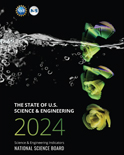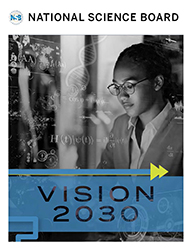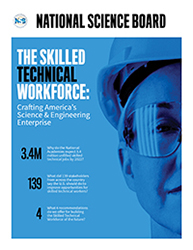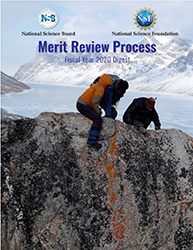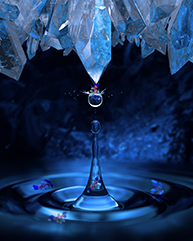
Richard Garwin to receive the National Science Board Vannevar Bush Award

Richard Garwin (Credit and Larger Version)
May 2, 2023
Alexandria, Va. - The National Science Board will recognize Richard L. Garwin as the 2023 Vannevar Bush Award recipient on May 9, 2023, during the National Science Foundation Awards Gala at the National Air and Space Museum in Washington, D.C.
Garwin is an influential physicist who has helped significantly advance U.S. defense and intelligence technologies and has advised multiple presidential administrations.
“Richard Garwin is truly remarkable,” Dario Gil, Chair of the Board’s External Engagement Committee, said. “His continuing contributions to society, both as a scientific researcher and presidential advisor, help bolster national security and improve international collaboration.”
The Vannevar Bush Award honors exceptional lifelong leaders in science and technology. The Board established this award in 1980 in the memory of Vannevar Bush, who inspired the creation of the National Science Foundation.
“When I found out I had won the award, I felt a sense of inferiority to Vannevar Bush, who really created the modern era in his work, Science, the Endless Frontier,” Garwin said. “Even though Bush was not himself a scientist, he had a vision for the future in which science could play a proper role.”
Honoring a genius
Garwin was born in 1928 in Cleveland, Ohio and lives in Scarsdale, New York. He earned a bachelor’s degree from the Case School of Applied Sciences in Cleveland and then went on to earn a Ph.D. in physics under the supervision of Enrico Fermi at the University of Chicago when he was 21 years old.
Another of Fermi’s students once shared that Fermi, a physicist and Nobel laureate, called Garwin the only true genius he had ever met. “I learned about Fermi’s comment in 1981, 27 years after he died, so I couldn’t ask him what he meant,” Garwin said. “Perhaps he saw my ability to do things that he couldn’t readily do, like quickly creating new technology in the lab.”
Garwin credits his father, Robert Garwin, with helping him find his way to a science lab. Robert studied electrical engineering at Case School of Applied Sciences and graduated in 1921. “My father was Jewish, as am I, and he could not get a job as an electrical engineer in Cleveland,” Garwin said. Instead, the elder Garwin became a high school teacher during the day and a projectionist in a movie theater at night. “I used to help my dad repair projectors and build audio amplifiers,” Garwin recalled.
Lois Garwin, Richard’s wife of 70 years until her death in 2018, also played a major role in his life. “I told my wife everything that I could that wasn’t classified,” Garwin said. Together they had three children: Jeff, Tom, and Laura. “My children have been by my side since I had a stroke in January 2023,” Garwin said. “They have done an enormous amount for me.”
Highlighting a remarkable career
Garwin’s long scientific career has focused on creating new inventions, conducting research, and advising policymakers and U.S. Presidents. He has made pioneering and transformative contributions to U.S. defense and intelligence technologies, low-temperature and nuclear physics, detection of gravitational radiation, magnetic resonance imaging, computer systems, laser printing, and nuclear arms control and nonproliferation.
Garwin’s most prized accomplishment is actually one for which he had a supporting role. “I served as a sort of midwife in the development of the Cooley–Tukey Fast Fourier Transform algorithm,” Garwin said. “This algorithm revolutionized computation, especially how we store and use images,” he said. “It was as significant as the invention of arithmetic.”
Garwin has advised every presidential administration since Eisenhower’s. He joined the recently created President’s Science Advisory Committee under President John F. Kennedy and served an unusually long eight years, leading several panels, especially those focused on ballistic missile threats and military aircraft. Garwin also joined a government advisory group called JASON, which reviews programs, some highly classified, that require advice from independent scientists. He advised President Barack Obama’s administration on the Deep Water Horizon oil spill as well as the U.S. response to the damaged reactors at Fukushima Daiichi.
Garwin is particularly passionate about arms control, dating from his involvement with the development of the hydrogen bomb. He has helped shape all international treaties to ban nuclear weapons tests since the first treaty talks in 1958.
“As Vannevar Bush said in Endless Frontier, scientific progress is necessary for our health, prosperity and security, but we must have public support,” Garwin said. "The role of science in democracy and civilization must be cherished and remembered.”
Garwin was honored with the National Medal of Science in 2002 and the Presidential Medal of Freedom in 2016. He is among a few scientists to have been elected to all three U.S. National Academies: the National Academy of Sciences (1966), the National Academy of Medicine (1975), and the National Academy of Engineering (1978).
About the National Science Board
The National Science Foundation Act of 1950 charged the NSB with two roles: governing board of the NSF and advisor to Congress and the President on policy matters related to STEM research and STEM education. Selected for their distinguished service and accomplishments in academia, government, and the private sector, the Board’s 24 presidentially appointed members are leaders in STEM research and education.
Media Contact: Elizabeth Jeffers, National Science Board, (703) 292-7496, ejeffers@nsf.gov
Useful NSB Web Sites:
Home Page: http://www.nsf.gov/nsb
Media Contact: http://www.nsf.gov/staff/staff_bio.jsp?lan=nlymn&org=NSF
News: http://www.nsf.gov/nsb/news
Meetings: http://www.nsf.gov/nsb/meetings
Publications: http://www.nsf.gov/nsb/publications
Facebook: https://www.facebook.com/NationalScienceBoard
Twitter: Twitter: https://twitter.com/intent/user?screen_name=NSF_NSB
YouTube: https://www.youtube.com/channel/UCkrHRzuGSrPp2haQs0T_Pww
To view PDF documents, please download Adobe Acrobat Reader.
